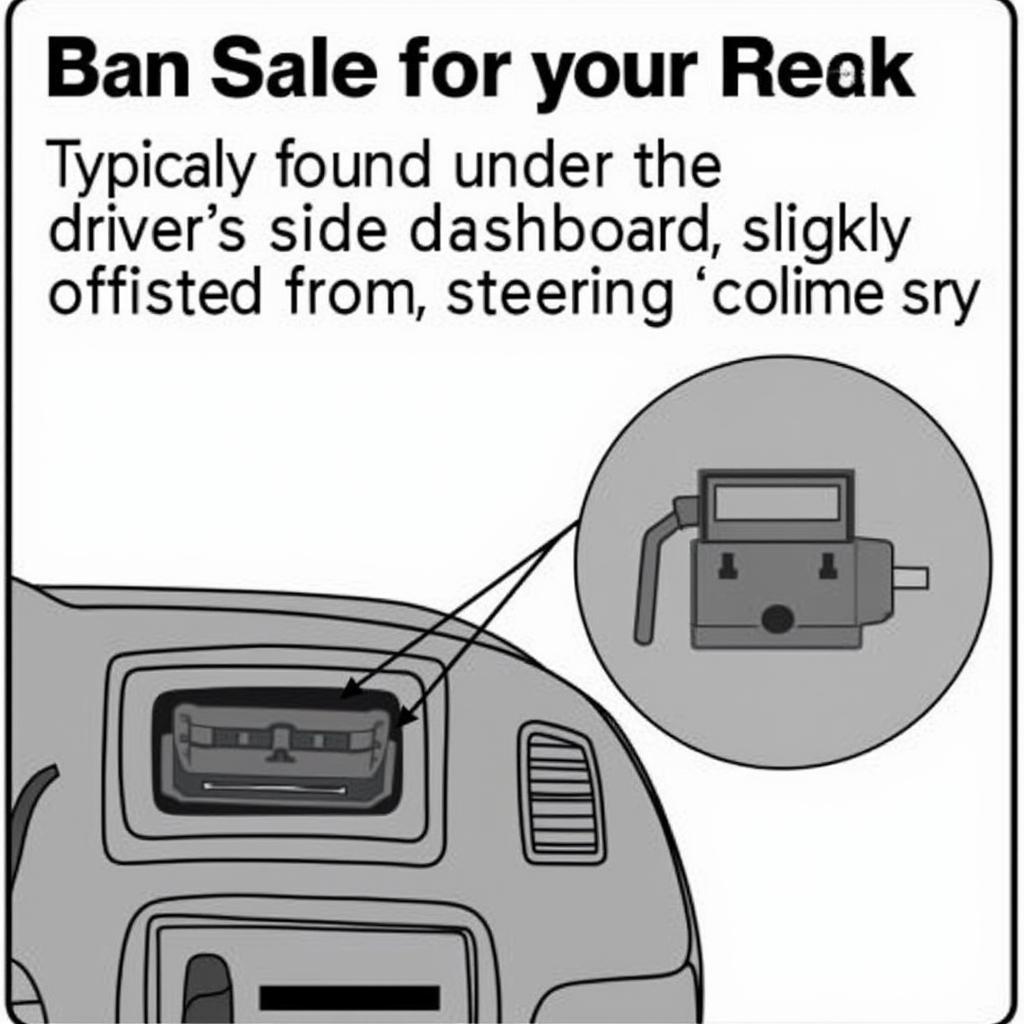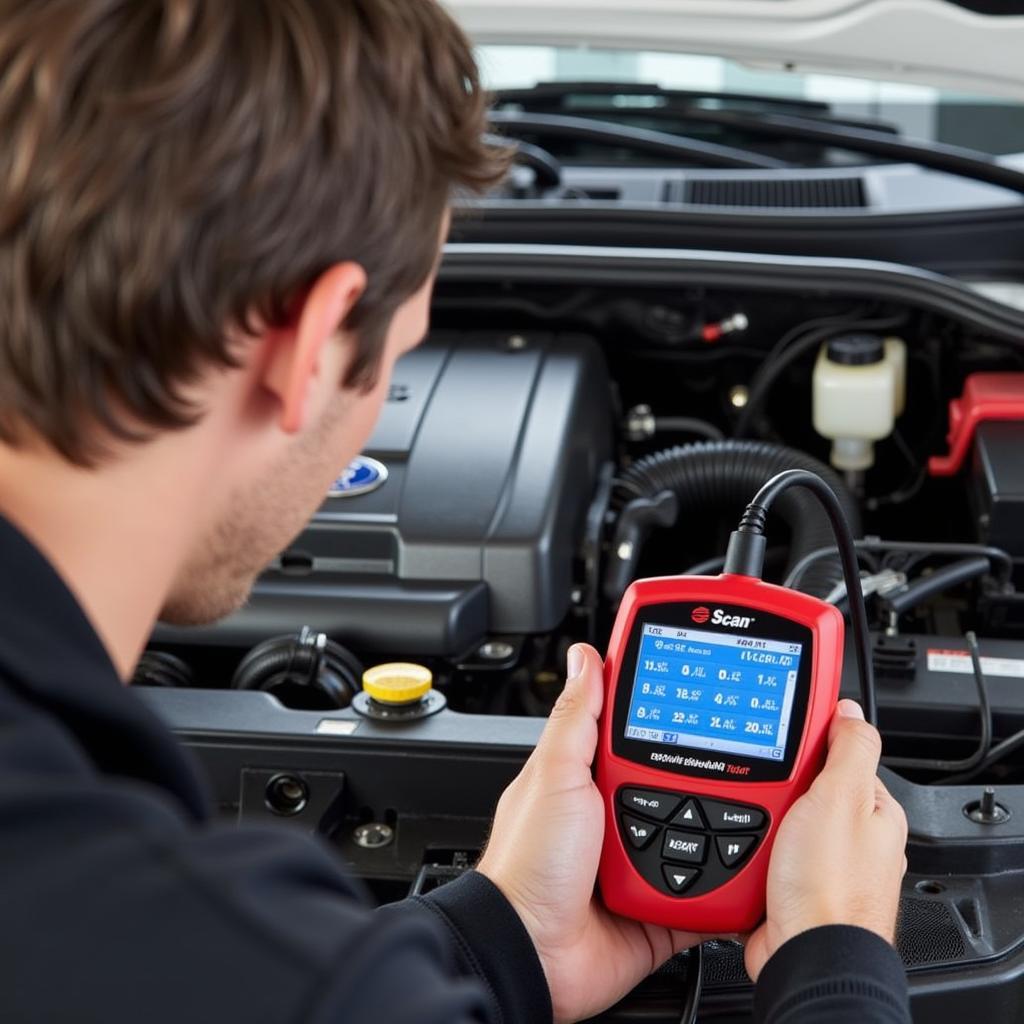Finding the right scan tool for your vehicle can be overwhelming, especially when you’re bombarded with technical jargon and a plethora of options. You need a Scan Tool That Reads All Vehicle Codes, right? A tool that empowers you to diagnose and potentially fix those pesky check engine lights. But where do you even begin?
This comprehensive guide is designed to demystify the world of automotive scan tools. Whether you’re a seasoned mechanic, a DIY enthusiast, or a car owner looking to take control of your vehicle’s health, we’ve got you covered.
Understanding Vehicle Codes: The Language of Your Car
Before diving into the world of scan tools, let’s understand what we’re dealing with – those cryptic vehicle codes. Think of them as your car’s way of communicating its woes. When something goes awry, the onboard computer system generates diagnostic trouble codes (DTCs) and stores them in its memory.
These codes are standardized by the Society of Automotive Engineers (SAE) and follow a specific format. For instance, a code like P0301 indicates a misfire in cylinder 1.
 OBD-II port located under the dashboard
OBD-II port located under the dashboard
Why You Need a Scan Tool That Reads All Vehicle Codes
You might be wondering, “Can’t I just take my car to a mechanic?” Sure, but having your own scan tool comes with a host of benefits:
- Save Money: Diagnose issues yourself and potentially avoid unnecessary trips to the mechanic.
- Early Detection: Catch minor problems before they escalate into major headaches.
- Peace of Mind: Gain a deeper understanding of your vehicle’s health.
- Empowerment: Take control of your car maintenance and repairs.
Types of Scan Tools: Finding the Perfect Match
The market is flooded with scan tools, each catering to different needs and budgets. Here’s a breakdown:
1. Basic Code Readers:
- Ideal for: Car owners and DIY beginners.
- Features: Read and clear basic engine codes.
- Pros: Affordable and user-friendly.
- Cons: Limited functionality and may not read all codes.
2. OBD-II Scanners:
- Ideal for: Car enthusiasts and DIYers looking for more features.
- Features: Read and clear engine, transmission, ABS, and airbag codes. May offer live data streaming.
- Pros: More comprehensive diagnostics than basic code readers.
- Cons: Can be more expensive than basic code readers.
3. Professional Scan Tools:
- Ideal for: Mechanics and advanced users.
- Features: Comprehensive diagnostics, bi-directional control, advanced programming, and specialized functions.
- Pros: The most powerful and versatile option.
- Cons: Expensive and require technical expertise.
Key Features to Consider:
When choosing a scan tool that reads all vehicle codes, keep these features in mind:
- Code Coverage: Ensure it covers all systems (engine, transmission, ABS, airbag, etc.).
- Live Data Streaming: View real-time sensor data to monitor vehicle performance.
- Bi-Directional Control: Test components and activate functions (like ABS solenoids) for more in-depth diagnostics.
- Software Updates: Opt for a tool that offers regular updates to keep up with new vehicle models.
- User Interface: Choose a tool with an intuitive interface and easy-to-understand menus.
Top Tips for Using Your Scan Tool Like a Pro
- Read the Manual: Familiarize yourself with your specific scan tool’s features and functions.
- Start Simple: Begin by reading and clearing basic engine codes.
- Research Codes: Use online resources or repair manuals to understand the meaning of each code.
- Don’t Panic: A code doesn’t always mean a major problem. Research before jumping to conclusions.
- Seek Professional Help: If you’re unsure about anything, don’t hesitate to consult a qualified mechanic.
BMW F10 Scan Tool: A Case Study in Specialized Diagnostics
Let’s take a specific example: a BMW F10 owner experiencing warning lights on their dashboard. While a generic scan tool might read some codes, a specialized BMW F10 scan tool is designed to delve deeper into the intricacies of this model’s complex systems.
These specialized tools can access manufacturer-specific codes and provide detailed insights into the F10’s electronics, engine performance, and more.
FAQs: Answering Your Scan Tool Questions
1. Can I use the same scan tool on all my vehicles?
While some scan tools offer wide vehicle compatibility, it’s essential to check the manufacturer’s specifications. Some tools might require specific adapters or software for certain makes and models.
2. What is the difference between OBD-I and OBD-II?
OBD-I (On-Board Diagnostics I) was an earlier system used before 1996. OBD-II (On-Board Diagnostics II) is the current standard used in most vehicles from 1996 onwards.
3. Can a scan tool fix my car?
A scan tool primarily diagnoses problems. While it can help you identify the issue, it doesn’t perform repairs.
4. What is live data streaming, and why is it important?
Live data streaming allows you to view real-time sensor readings, giving you a dynamic picture of your engine’s performance, transmission behavior, and other critical parameters.
5. Are expensive scan tools always better?
Not necessarily. The best scan tool depends on your individual needs, technical expertise, and budget.
Conclusion: Empowering Yourself with the Right Scan Tool
Choosing a scan tool that reads all vehicle codes is an investment in your vehicle’s health and your peace of mind. Whether you’re a DIYer tackling repairs head-on or a car owner seeking a deeper understanding of your vehicle, a quality scan tool is an indispensable tool.
Remember to research your options, consider your needs, and choose a tool that empowers you to take control of your vehicle’s diagnostics.
Need help finding the perfect scan tool? Contact ScanToolUS today at +1 (641) 206-8880 or visit our office at 1615 S Laramie Ave, Cicero, IL 60804, USA. We’re here to help you navigate the world of automotive diagnostics.


